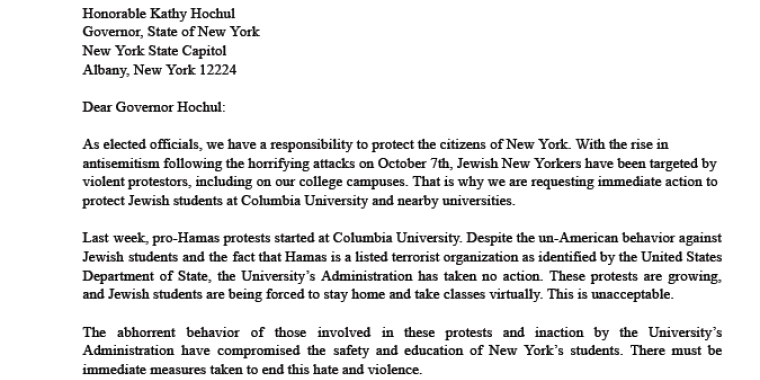
Senate Passes Anti-Bullying Legislation
Andrew J Lanza
June 2, 2011
Includes Protections Against Cyber-Bullying and Helps Empower Schools To Intervene
The New York State Senate today passed comprehensive anti-bullying legislation to help put an end to this destructive activity that often interferes with a student’s education and emotional well-being. The bill (S.4921), cosponsored by Senator Lanza, would help prevent cyber-bullying as well as conventional bullying on school grounds to create safer learning environments for children.
Cyber-bullying often involves vicious anonymous taunts on social networking sites such as Facebook. Unrelenting and egregious incidents of cyber-bullying and conventional bullying have taken place throughout New York State and among diverse age groups. This peer abuse has also had deadly circumstances, as evidenced by a West Islip teen who hanged herself after cyber-bullies taunted her even in death. In Brooklyn, a 5-year-old kindergarten student was beaten up and had her hair cut by classmates.
“Bullying is not something to be dismissed as mere childhood antics,” Senator Lanza said. “In an effort to deal with this continuing problem, we have enacted SAVE (Schools Against Violence in Education) and the Dignity For All Students Act - yet more remains to be done. Our laws must be expansive enough to include any and all types of bullying and must provide a means by which to deal with the horrors of cyber-bullying. LEAD (Law to Encourage the Acceptance of All Differences) will accomplish that end. If a student is intimidated, threatened, harassed or taunted by others and the severity of the circumstances is interfering with their education, school districts should have the tools to address the damaging behavior.”
“Children are being emotionally destroyed by bullies for reasons as seemingly benign as their hair style or clothing choices and, sometimes, for no reason at all,” Senate Majority Leader Dean G. Skelos said. “In today’s era of omnipresent technology, we must take steps to prevent the various types of bullying and teach students about the consequences of this harmful behavior so that children can continue to focus on learning and growing up healthy.”
The Senate passed the “Law To Encourage the Acceptance of All Differences” (LEAD) to encompass cyber-bullying and further protect all students, regardless of the motivation for acts of bullying. LEAD further defines bullying as: the severe and repeated use by one or more students or school employees of a written, verbal or electronic form, or a physical act or gesture directed at a student that caused physical injury, emotional harm or damage to a student's property; placed the student in a reasonable fear of harm to himself/herself; creating a hostile environment at school; substantially disrupting the educational process or the orderly operation of a school.
The anti-bullying legislation would give New York schools the tools to help reduce bullying by requiring school employees to report incidents of bullying to principals and superintendents and adds bullying to the list of incidents for which a student can be disciplined. LEAD requires school districts to create policies and guidelines to encourage awareness of and to prohibit acts of bullying, and would increase education about bullying prevention for teachers and students.
In a study funded by the United States Department of Justice, the National Crime Prevention Council reports that cyber-bullying is at an all-time high. Forty-three percent of teenagers reported being victims of cyber-bullying. The vast majority of teens knew their bully, however, only 10 percent of those cyber-bullying victims told their parents or other adults.
Statistics show that efforts are working in states where bullying prevention is taught in schools. According to the National Youth Violence Prevention Resource Center, bullying can be reduced by up to 50 percent when there is a school-wide commitment to preventative and educational programs focused on bullying.
The bill has been sent to the Assembly.
###


